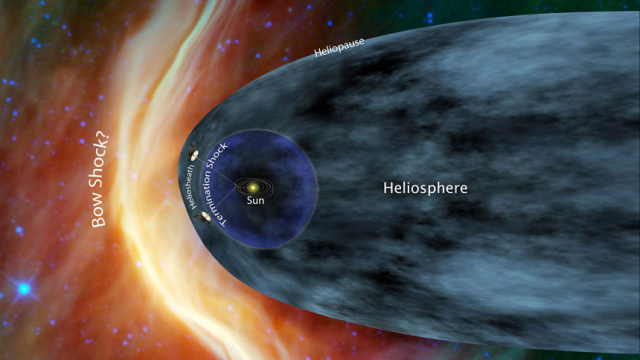
In 1977, a mere 20 years after the launch of Sputnik marked the beginning of the Space Age, the twin Voyager 1 and 2 spacecraft were launched, bound for tours of the gas giant planets of the outer Solar System. And though it's been over two decades since either Voyager made its final planetary fly-by, to this day both vehicles are in good health, still sending their pioneering data back to us via the worldwide Deep Space Network of radio dishes and still making important scientific discoveries and history.
Though launched 4-5 years after the first spacecraft to cross the Asteroid Belt, encounter gas giants and achieve escape velocity from our Solar System (Pioneers 10 and 11), the Voyagers have since outdistanced the Pioneers to become the most distant human-made craft in space. We also lost contact with the Pioneers, in 1995 and 2003—but the Voyagers are still on line!
At nearly three times the mass and power generation of the Pioneers, the Voyagers continue to blaze trails. As of right now, Voyager 2 is nearly 15 billion kilometers from the Sun and Voyager 1 leads the race at over 18 billion kilometers: quadruple the distance to Neptune! Every second carries Voyager 1, the speedier of the pair, 17 kilometers farther into space.
And though it will be at least 40,000 years before Voyager 1 gets anywhere near another star, recent data from the probe indicates that it may have reached a milestone in its journey anyway.
When the Voyagers were launched, even though their primary missions were to observe the gas giants of the outer Solar System, NASA hoped that the spacecraft would stay active and healthy long enough to make measurements until their inevitable passage through the edge of the Solar System: the boundary layer between the influences of our Sun and the environment of interstellar space beyond.
